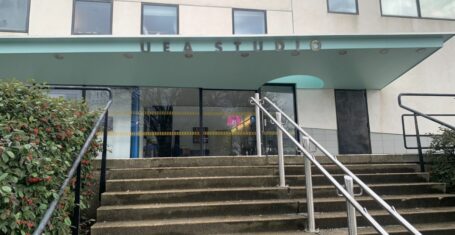
Live Theatre Needs to be Interactive
Theatre needs to be interactive if it is going to compete with modern technology, argues drama student Sam Day.
I don’t like boring theatre.
For my Drama and Theatre Studies A Level, I sat through a dreary 10,800 second production of Henrik Ibsen’s ‘The Lady from the Sea’. The set, much like the delivery of the play, was wooden. The people on stage blabbed continuously about 19th-century Norwegian stuff which, as an 18 year-old saturated-by-the-modern-technological-era teenage boy with a concentration span of two minutes, seemed pretty irrelevant.
The highlight was a well-established actress starring in it (whose name I have now forgotten) playing the main part. The task of my fellow Drama students and I was to analyse the production and figure out why it was so incredible, in preparation of our summer exam devised by robots.
I noticed something very striking when I observed the audience: half of the seats were filled with elderly people, and the other half with students just like me. Half of the people were there for the pure enjoyment of theatre, whilst the other half were there to prepare for their exams.
How frustrating must it be for a performer, when a large fraction of one’s audience are not there to be entertained, but instead are attending a compulsory exam revision session?
If I were a professional actor I could not think of anything worse than performing in front of people who were forced to watch me. Acting is a career option for me because I want to entertain people who want to see me perform. I want people to laugh, cry, and be made aware of issues that really matter.
The main difference between theatre and the hodgepodge of modern technological is that theatre is live performance. An audience should directly experience it. Theatre needs to be active.
Let’s be ambitious, create a spectacle, make ‘em go WOW. In last term’s Minotaur production of Jerusalem, every effort was made to make the set look spectacularly detailed. Leaves and twigs were densely sprayed across every inch of the space. There was a sofa, half-filled bottles of alcoholic beverages and even a purposely-built end-of-a-caravan.
Let’s get the audience involved more. In a Minotaur production of The Real Inspector Hound, actors sat with the audience, offering chocolates to the spectators sitting next to them. Some shouted hysterically in the audience members’ faces. I fell on one unfortunate audience member.
If that wasn’t direct enough, a production of Shakespeare’s The Comedy of Errors saw me taken backstage, put into costume and then directed onstage. I’d turned from spectator into performer.
When it all comes down to it, if theatres are going to get the younger masses in for their own enjoyment, it’s the productions that make the audience watch actively that make theatre. Live performance, proper entertainment; that’s effective.









































